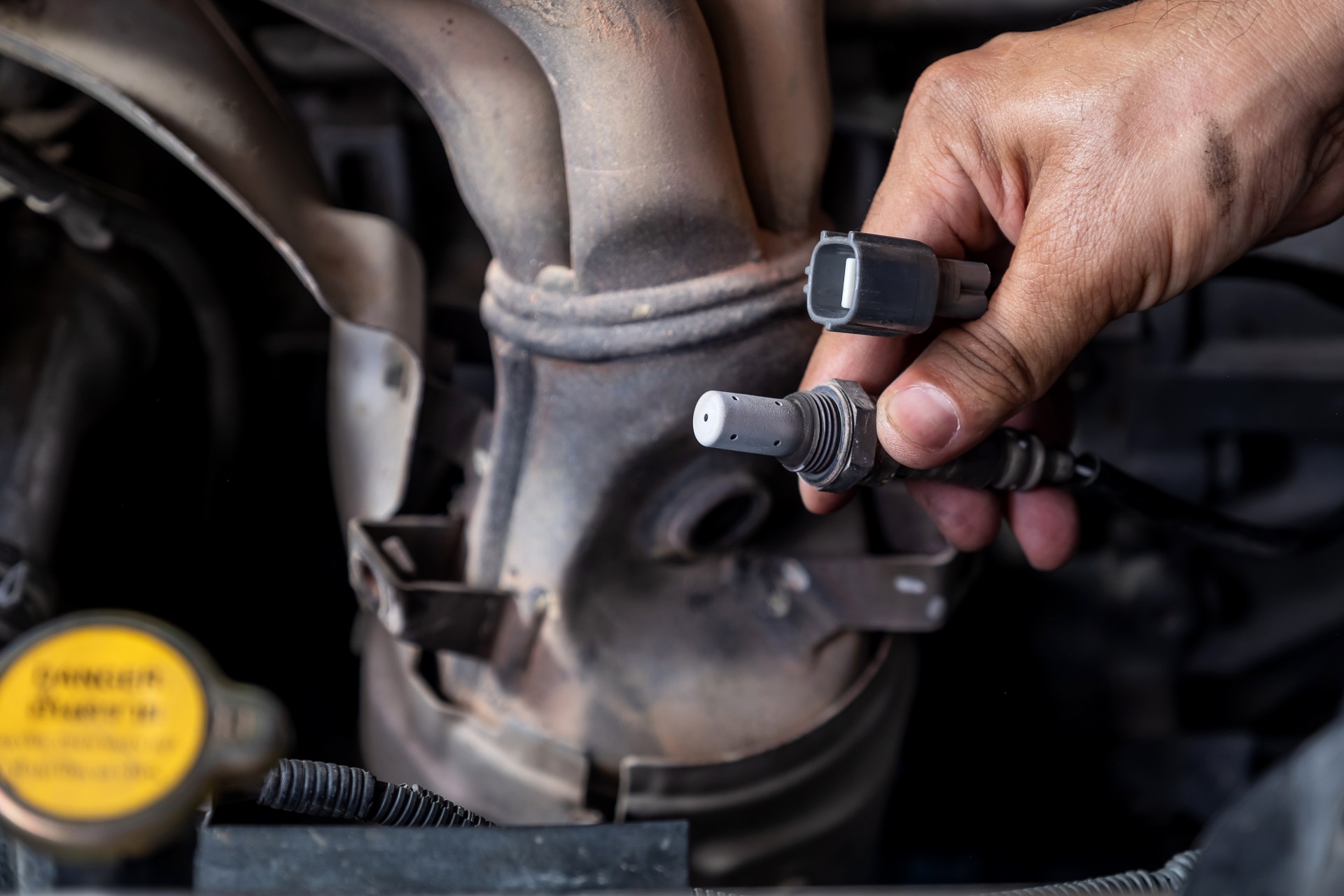Are temporary fix for bad o2 sensor you experiencing some engine troubles? Is your car giving off strange smells or making unusual noises? Well, one possible culprit could be a bad oxygen (O2) sensor. This tiny yet crucial component plays a vital role in monitoring the air-fuel ratio in your vehicle’s engine. When it malfunctions, it can lead to decreased fuel efficiency, increased emissions, and even potential damage to other engine components.
But fear not! In this blog post, we’ll show you how to make the most out of a temporary fix for a bad O2 sensor. By following these simple steps, you can get back on the road with confidence while buying yourself some time before getting that sensor replaced. So buckle up and let’s dive into the world of O2 sensors together!
Understanding O2 Sensors and Their Importance
Understanding O2 Sensors and Their Importance
Oxygen sensors, also known as O2 sensors, serve a crucial role in monitoring the amount of oxygen present in your vehicle’s exhaust gases. This information is then relayed to the engine control unit (ECU), which adjusts the air-fuel mixture accordingly for optimal performance.
These small but mighty sensors are typically located along the exhaust system and can be found upstream or downstream of the catalytic converter. They consist of a ceramic body with a heated platinum wire or zirconia element. The difference in oxygen levels between the atmosphere and exhaust gas causes voltage fluctuations that are measured by the sensor.
Why are these little devices so important? Well, they help ensure that your engine is running efficiently while minimizing harmful emissions. By continuously monitoring oxygen levels, O2 sensors enable your vehicle to maintain an ideal air-fuel ratio for combustion—a balance that leads to improved fuel economy, reduced pollution, and overall better performance.
Without functioning O2 sensors, you may experience decreased fuel efficiency as your engine struggles to find its optimal operating conditions. Plus, failing to address this issue promptly could result in further damage down the line and potentially lead to costly repairs.
Now that we have a basic understanding of their importance let’s move on to identifying signs of a bad O2 sensor!
Signs of a Bad O2 Sensor
Signs of a Bad O2 Sensor
Your car’s oxygen (O2) sensors play a vital role in its overall performance. They monitor the amount of oxygen present in the exhaust gases and provide crucial feedback to your car’s computer system, ensuring that the fuel-to-air ratio is optimal for combustion.
So, how can you tell if your O2 sensor is on the fritz? Well, there are several signs to watch out for. One common indicator is a decrease in fuel efficiency. If you notice that you’re making more frequent trips to the gas station than usual, it could be a sign that one or more of your O2 sensors are faulty.
Another giveaway is poor engine performance. You may experience rough idling, hesitation during acceleration, or even stalling altogether. A malfunctioning O2 sensor can disrupt the air-fuel mixture and lead to these frustrating issues.
Additionally, a failing O2 sensor can trigger warning lights on your dashboard, such as the “Check Engine” light. While this light can indicate various problems with your vehicle, an illuminated “Check Engine” light coupled with any other symptoms mentioned earlier should prompt you to investigate further.
If you detect an increase in harmful emissions coming from your tailpipe or notice strange smells like rotten eggs or sulfur while driving, it could be another red flag pointing towards a bad O2 sensor.
Remember though – these signs don’t necessarily guarantee that it’s solely an issue with your O2 sensors. Other components like spark plugs or catalytic converters could also contribute to similar symptoms. However, paying attention to these indicators will help guide your troubleshooting process and pinpoint potential problem areas for further inspection and testing by professionals.
The Temporary Fix: How to Get the Most Out of It
Now that you’ve identified a bad O2 sensor in your car, it’s time to take action and find a temporary fix to keep your vehicle running smoothly. While replacing the sensor is recommended for long-term success, there are a few steps you can follow to get the most out of this temporary solution.
First, it’s important to identify which O2 sensor is causing the issue. Your car may have multiple sensors, so consult your owner’s manual or do some research online to locate them. Once you’ve pinpointed the problematic sensor, move on to step two.
Cleaning or replacing the faulty sensor is crucial for optimal performance. If you choose to clean it, use an appropriate cleaner and follow manufacturer instructions carefully. Be gentle when handling the delicate components of the sensor. However, if cleaning doesn’t improve its functionality, consider replacing it with a new one.
After cleaning or replacing the O2 sensor, don’t forget to reset your car’s computer system by disconnecting the battery for about 15 minutes. This will allow any error codes related to the faulty O2 sensor to clear from memory.
While these steps can help temporarily improve your car’s performance and fuel efficiency, remember that they are not permanent solutions. It’s essential to address underlying issues and replace any malfunctioning sensors as soon as possible.
By following these tips and taking care of your O2 sensors regularly, you can ensure their longevity and prevent future problems with engine performance. Remember that maintaining all aspects of your vehicle contributes greatly to its overall health!
Stay tuned for our next blog post where we’ll discuss how improper maintenance can lead to early o2 sensor failure!
Step 1: Identify the Problematic O2 Sensor
Step 1: Identify the Problematic O2 Sensor
Your car’s O2 sensors play a crucial role in monitoring the air-fuel ratio and ensuring optimal performance. When one of these sensors goes bad, it can lead to a host of issues like decreased fuel efficiency and increased emissions. But fear not, because identifying the problematic sensor is the first step towards getting it fixed!
So, how do you go about finding which sensor is causing trouble? The good news is that most cars have multiple O2 sensors located throughout the exhaust system. Start by consulting your vehicle’s manual or doing some research online to find out how many sensors your specific make and model has.
Once you know how many sensors there are, locate them under your car or hood. They look like small metal cylinders with wires coming out of them. Take note of their positions so that you can easily identify which one needs attention.
Now comes the fun part – diagnosing! There are various methods for identifying a faulty sensor, depending on your level of expertise and access to diagnostic tools. One common method involves using an OBD-II scanner to read any error codes stored in your car’s computer system.
If you don’t have access to a scanner, don’t worry! You can still use visual inspection as a starting point. Look for signs of damage or corrosion on the sensor itself or its wiring connections. If everything looks clean and intact, consider other symptoms such as rough idling, stalling engine, or poor acceleration when determining which sensor might be at fault.
Remember that pinpointing the exact problematic O2 sensor may require further testing or professional assistance if needed. But by following this first step diligently, you’ll be well on your way towards resolving any issues related to these vital components in no time!
Step 2: Clean or Replace the Sensor
Step 2: Clean or Replace the Sensor
Now that you’ve identified which O2 sensor is causing trouble, it’s time to take action. The next step in getting the most out of your temporary fix is to clean or replace the sensor.
Cleaning the sensor can be a simple and cost-effective solution, especially if the issue is due to build-up or contamination. Start by removing the sensor from its housing and carefully inspecting it for any visible signs of dirt, debris, or corrosion. If you notice any buildup, gently clean it using a non-abrasive cleaner and a soft brush.
In some cases, cleaning may not be enough to restore proper functionality. If this is the case, replacing the sensor is your best option. Look for a compatible replacement at your local auto parts store or online retailer. Be sure to choose a high-quality sensor that matches your vehicle’s specifications.
Remember to follow manufacturer guidelines when installing the new O2 sensor. This will ensure proper fitment and optimal performance.
Taking care of your O2 sensors through regular maintenance can help extend their lifespan and prevent future issues. Keep an eye on them during routine inspections and address any problems promptly.
By taking these steps to clean or replace your faulty O2 sensor, you’re giving yourself peace of mind knowing that you’re maximizing its effectiveness until a permanent fix can be implemented.
Step 3: Reset Your Car’s Computer
Step 3: Reset Your Car’s Computer
Resetting your car’s computer is an important step in getting the most out of a temporary fix for a bad O2 sensor. When you clean or replace the sensor, it’s crucial to also reset the computer to ensure that it recognizes the changes and adjusts accordingly.
To reset your car’s computer, you can start by disconnecting the negative battery cable. This will effectively cut off power to the system and allow any stored data or error codes related to the O2 sensor issue to be cleared.
After disconnecting the battery cable, wait at least 10 minutes before reconnecting it. This will give ample time for all residual power in the system to dissipate completely. Once you’ve reconnected everything, start your car and let it idle for a few minutes so that it can recalibrate itself.
It’s worth noting that resetting your car’s computer may cause it to run slightly differently at first as it adjusts to new settings. However, this should only be temporary as long as you have properly cleaned or replaced the faulty O2 sensor.
By following these steps and taking care of your O2 sensors on a regular basis, you can extend their lifespan and optimize their performance in between permanent fixes or replacements.
Remember, always consult with a professional mechanic if you’re unsure about performing any repairs or maintenance tasks yourself!
Maintaining Your O2 Sensors for Long-Term Success
Maintaining Your O2 Sensors for Long-Term Success
Proper maintenance of your O2 sensors is crucial to ensure their long-term success in keeping your engine running smoothly and efficiently. Here are a few tips to help you maintain your O2 sensors effectively.
Regularly inspect the wiring and connectors connected to the sensor. Over time, these wires can become damaged or corroded, leading to inaccurate readings. If you notice any frayed wires or corrosion, it’s important to repair or replace them promptly.
Keep an eye on the overall health of your engine. A poorly functioning engine can put extra stress on the O2 sensors and cause them to fail prematurely. Regular tune-ups and oil changes can go a long way in maintaining optimal engine performance.
Furthermore, avoid using fuel additives that contain silicone as they can coat the sensor and interfere with its ability to detect oxygen levels accurately. Stick to high-quality fuel from reputable sources instead.
Stay vigilant for any signs of trouble such as decreased fuel efficiency or illuminated check-engine lights. Ignoring these warning signs could lead to further damage not only to your O2 sensors but also other components of your vehicle.
By following these simple steps and being proactive in maintaining your O2 sensors’ condition, you can extend their lifespan and enjoy continued success in keeping your vehicle running at its best!
Conclusion
Conclusion
Taking care of your car’s O2 sensors is crucial for maintaining optimal performance and fuel efficiency. While a temporary fix can help you get by in the short term, it’s important to address the underlying issue as soon as possible.
In this article, we explored the importance of O2 sensors and how to identify signs of a faulty sensor. We also discussed steps you can take to temporarily fix a temporary fix for bad o2 sensor bad O2 sensor, including cleaning or replacing the sensor and resetting your car’s computer.
However, it’s worth noting that these temporary temporary fix for bad o2 sensor fixes are just that – temporary. To ensure long-term success and avoid potential damage to other components of your vehicle, it’s essential to have any faulty O2 sensors properly repaired or replaced by a qualified mechanic.
Regular maintenance and inspection of your O2 sensors will not only save you money on costly repairs but also contribute to better overall temporary fix for bad o2 sensor vehicle performance. By keeping an eye on their condition and promptly addressing any issues, you’ll be able to enjoy smooth rides with improved fuel efficiency for years to come.
Remember, taking care of your car means taking care of its vital components like the O2 sensors. So don’t neglect them – give them the attention they deserve!










